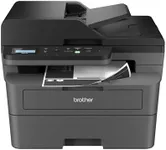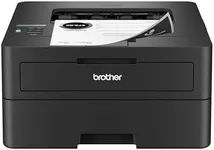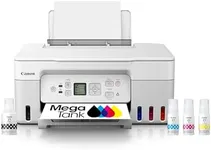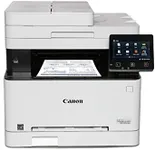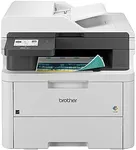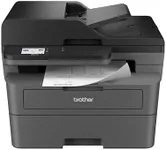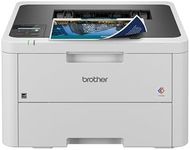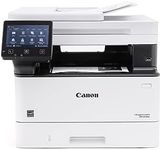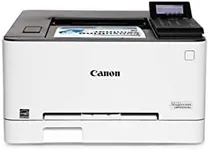Buying Guide for the Best At-Home Printers
Choosing the right at-home printer can make a big difference in your daily tasks, whether you need it for work, school, or personal projects. The key is to understand your specific needs and match them with the printer's features. Here are some important specifications to consider when selecting an at-home printer, along with explanations to help you make an informed decision.Printer TypePrinters generally come in two main types: inkjet and laser. Inkjet printers are versatile and can handle a variety of print jobs, including high-quality photos and color documents. They are ideal for home use where you might need to print different types of documents. Laser printers, on the other hand, are known for their speed and efficiency, especially for high-volume printing of text documents. They are best suited for users who primarily print black-and-white documents. Consider what you will be printing most often to decide which type is right for you.
Print Quality (DPI)DPI stands for dots per inch and measures the resolution of the printed output. Higher DPI means better print quality. For general home use, a printer with 600-1200 DPI is usually sufficient. If you plan to print high-quality photos or detailed graphics, look for a printer with a higher DPI, such as 2400 DPI or more. Think about the quality of prints you need and choose a printer that meets those requirements.
Print Speed (PPM)PPM stands for pages per minute and indicates how fast a printer can print. If you frequently print large documents, a higher PPM can save you time. For occasional printing, a lower PPM might be acceptable. Generally, inkjet printers have a lower PPM compared to laser printers. Assess how often and how much you print to determine the importance of print speed for your needs.
Connectivity OptionsModern printers offer various connectivity options such as USB, Wi-Fi, Bluetooth, and Ethernet. Wi-Fi and Bluetooth allow for wireless printing from multiple devices, which is convenient for a home with several users. USB connections are reliable for direct printing from a single computer. Ethernet is useful for a more stable network connection. Consider how you plan to connect your printer to your devices and choose one with the appropriate connectivity options.
Paper HandlingPaper handling refers to the types and sizes of paper a printer can accommodate, as well as the capacity of its paper tray. If you need to print on different paper sizes or types, such as envelopes or photo paper, ensure the printer supports them. A larger paper tray capacity is beneficial if you print frequently, as it reduces the need to refill the tray often. Think about the types of documents you will print and how often you print to choose the right paper handling features.
Multifunction FeaturesMany at-home printers come with additional features like scanning, copying, and faxing. These multifunction printers can save space and money by combining several devices into one. If you need these additional functions, look for a printer that offers them. If you only need to print, a single-function printer might be a better choice. Consider your daily tasks and whether these extra features will be useful to you.
Operating CostsOperating costs include the price of ink or toner and the frequency of replacement. Inkjet printers generally have lower upfront costs but higher ongoing ink costs, especially if you print a lot of color documents. Laser printers have higher initial costs but lower per-page costs for black-and-white printing. Evaluate how much you print and the types of documents to estimate your long-term operating costs and choose a printer that fits your budget.
Size and DesignThe size and design of the printer can affect where you place it in your home. Compact printers are ideal for small spaces, while larger printers may offer more features but require more room. Consider the space you have available and how the printer's design will fit into your home environment. Choose a printer that balances functionality with the available space.
